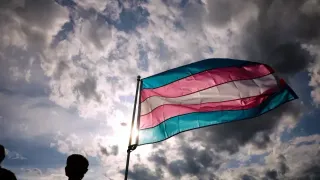December 1, 2023
Who Is Still Getting HIV in America? Medication Is Only Half the Fight
READ TIME: 5 MIN.
Racial Disparities
Gay and bisexual men continue to comprise around two-thirds of new HIV infections in the U.S. Transgender people, people who inject drugs and sex workers also have disproportionate new infection rates. But cases are not distributed evenly by race.
The Centers for Disease Control and Prevention's 2021 HIV Surveillance Report on groups at risk of HIV in 13 U.S. cities found that nearly 80% of gay and bisexual men engaged in condomless anal sex, with higher rates among white men than among both Black and Latino men.
However, between 2015 and 2019, white gay and bisexual men experienced a 17% decrease in HIV cases. Black and Latino gay and bisexual men experienced no significant reductions. This is likely due to disparities in access to HIV prevention medication. Among those who were HIV negative, only a little over 40% had used PrEP in the past 12 months, with white men reporting higher use than both Black and Latino men. Among those who were HIV positive, 95% were actively using antiviral therapy, and there was little variation by race.
Factors such as stigma, lack of access to and mistrust in health care, socioeconomic status, and cultural nuances that restrict access to PrEP likely contribute to the unchanging HIV burden Black and Latino men, trans people and people experiencing homelessness face.
Closing the PrEP Access Gap
A recent systematic review of 42 different interventions to promote PrEP among gay and bisexual men in the U.S. found that the most promising involve addressing various social and environmental factors that restrict access and adherence.
Tackling access barriers at the community and health care levels can enhance public health initiatives to expand PrEP access, including addressing issues like stigma and medical mistrust. This can help effectively promote PrEP use among Black and Latino gay and bisexual men and reduce racial disparities in HIV infections.
It is also important to note that while HIV disproportionately affects certain groups, people having heterosexual sex are still at risk and need to be part of the HIV prevention solution.
World AIDS Day serves as a poignant reminder that the fight against HIV is not only a global endeavor but also one that requires a nuanced understanding of the unique challenges different communities face. Addressing disparities and tailoring interventions can help move humanity closer to a world where HIV is no longer a pervasive threat.
![]()
Angel Algarin, Assistant Professor of Health Promotion and Disease Prevention, Arizona State University
This article is republished from The Conversation under a Creative Commons license. Read the original article.






